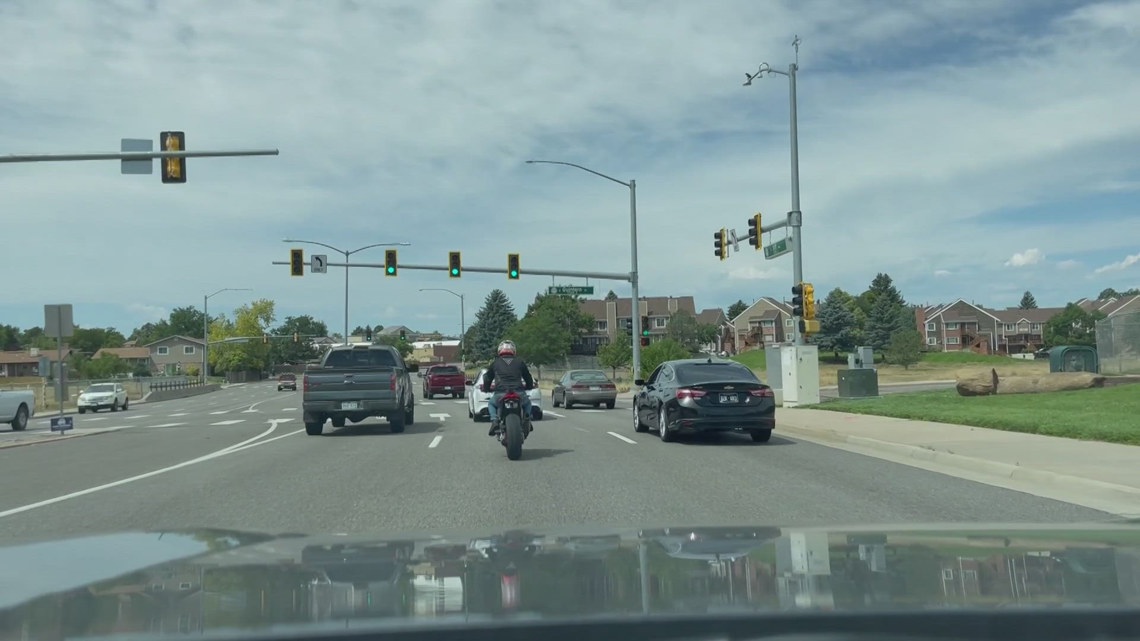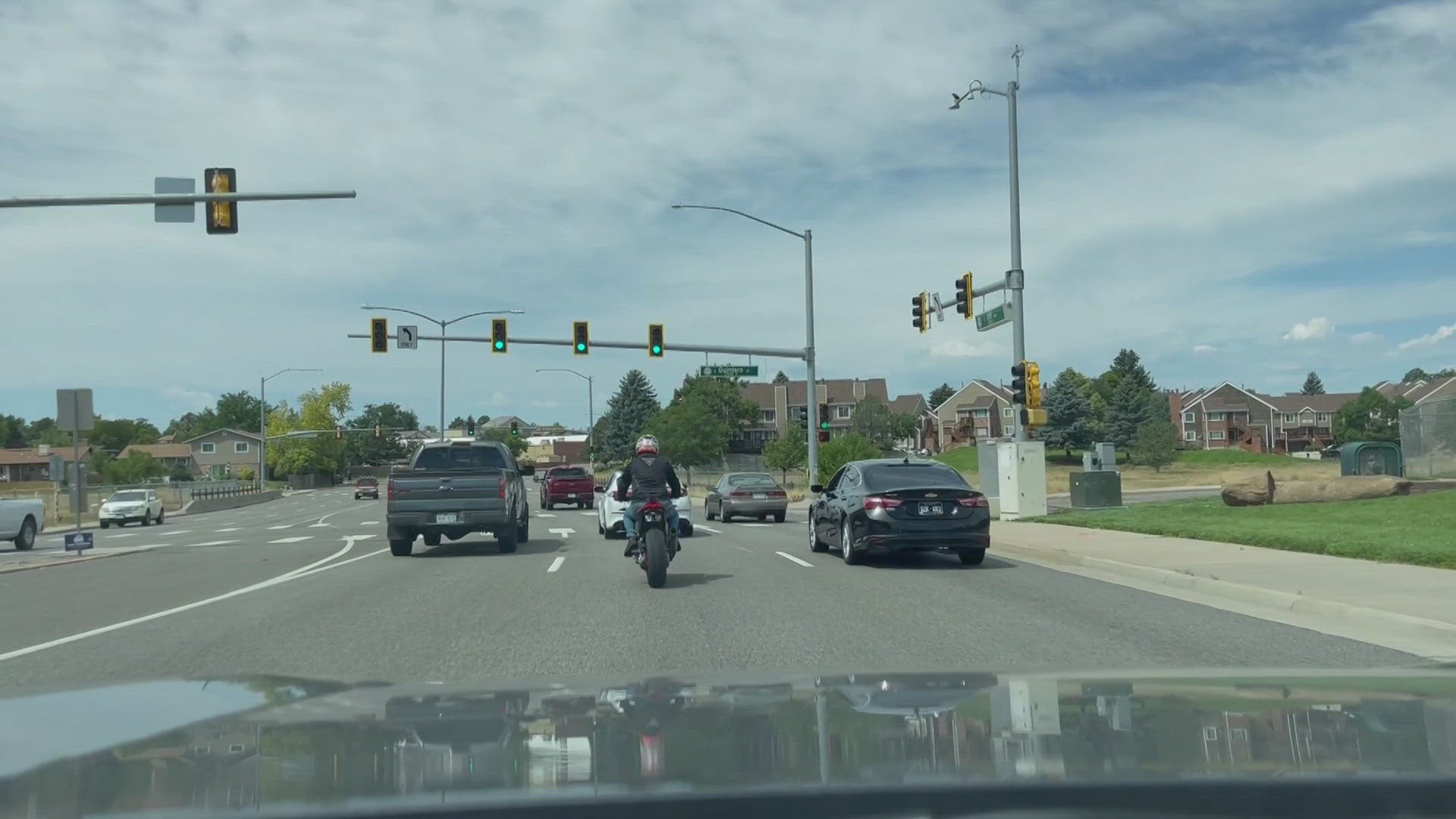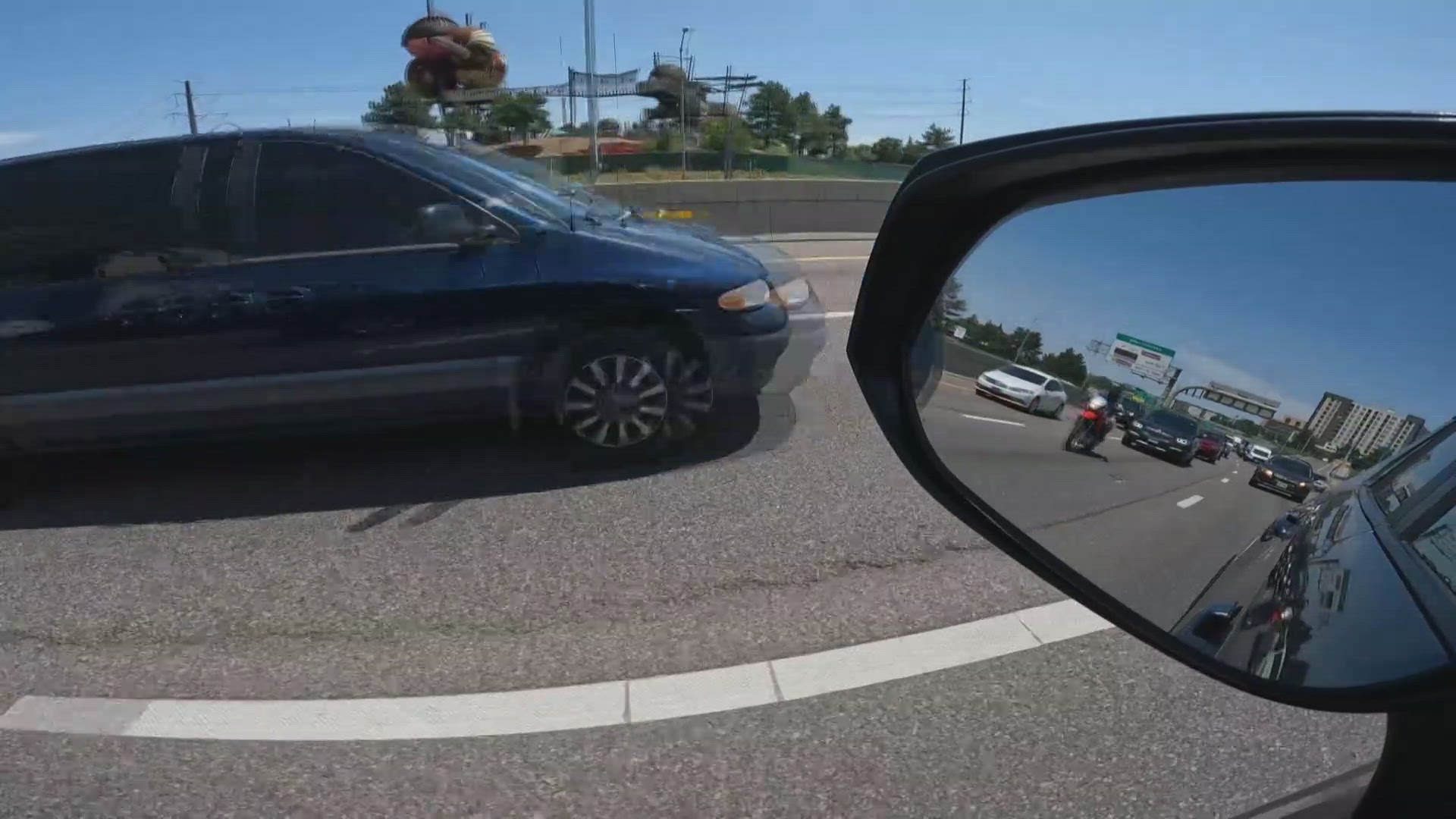AURORA, Colo. — Colorado’s new lane filtering law goes into effect Wednesday, with rules for motorcyclists and drivers.
Signed by Colorado Gov. Jared Polis in April, SB24-079 allows motorcycles to move between cars if traffic is stopped.
Not to be confused with lane splitting, which allows motorcyclists to weave through moving traffic and is illegal in Colorado, lane filtering requires traffic to be stopped, such as at a red light or during a backup on the interstate.
These are the five rules of lane filtering according to the Colorado State Patrol.
- The vehicles a rider wants to pass must be at a complete stop
- The lane must be wide enough to fit both the car and the motorcycle
- The motorcycle must move at 15 mph or less while passing
- The rider must pass safely and control the motorcycle
- The rider must pass on the left and not enter the oncoming lane of traffic
Colorado State Patrol and other departments will be enforcing the law, making sure motorcyclists aren’t passing when traffic is moving. Trooper Gabriel Moltrer said they will also be keeping an eye on other vehicles.
“Once the vehicles start moving, that motorcycle is going to have to filter in behind a motor vehicle,” said Moltrer. “So, if another vehicle is preventing them from doing that, they're also breaking the law.”
The goal of lane filtering is to protect motorcyclists and help with traffic flow but there’s a fear it could also cause other problems.
“We hear about road rage all the time and there is a possibility this could spur road rage out there,” said Jim Wilson, owner of Ride On Motorcycle Training. “Both the motorcycles and the other vehicle types need to be courteous to each other and be aware that they’re going to be sharing a lane when a motorcyclist is filtering.”


The state will try it out for three years, then reevaluate the data and go from there. Right now, that data is not looking good. In the first six months of 2024, CDOT said there were nearly 300 fatalities on Colorado roads and more than 50 of them involved motorcycles. State troopers hope this law could help reduce those numbers.
“It gets them from in-between those crunch zones to where they're able to move up that line,” said Trooper Moltrer. “It takes away that danger of them being struck from behind in a rear-end situation. It's also designed to help keep traffic moving.”
Just like the zipper merge, Wilson said lane filtering is going to take some getting used to.
“Motorists are going to have to be aware of their surroundings, not only in front and beside them but also behind them in case there is a motorcyclist that is going to filter by them in their lane.”
The lane filtering law doesn't go into effect until Wednesday. The maneuver is considered illegal until then.


